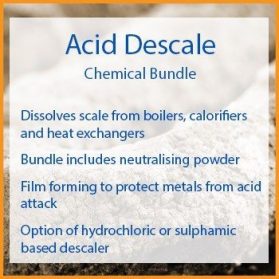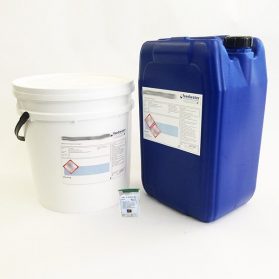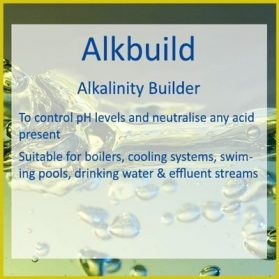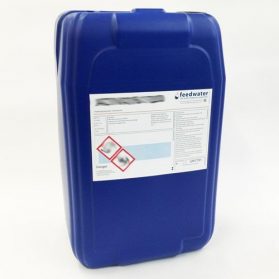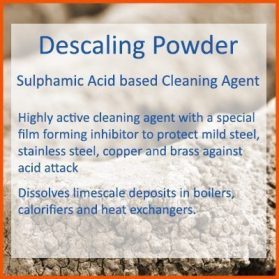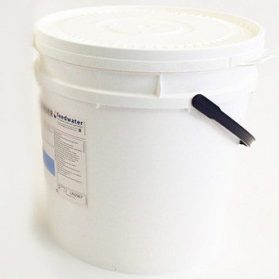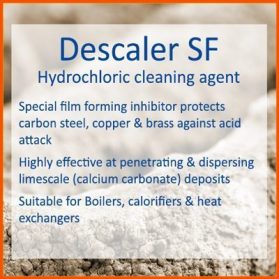You can buy the chemicals mentioned in this procedure in our web shop by following their links.
Before starting ensure that the Descaler is suitable for the system metallurgy.
DESCALER ‘SF’ should NOT be used on stainless steel, aluminium or galvanised surfaces.
| Iron / Steel | Copper & Brass | Stainless Steel | Galvanised Steel | Aluminium | |
|---|---|---|---|---|---|
| Descaler SF | Yes | Yes | No | No | No |
| Descaling Powder | Yes | Yes | Yes | No | No |
Set up a circulation around the heat exchanger using an external pump and tank. Where the temporary inlet and outlet are at different heights the outlet should be the higher of the two to ensure that the heat exchanger is fully flooded with cleaning solution. The temporary circulation system should be tested prior to adding the chemical to ensure there are no leaks.
If using DESCALING POWDER add 10ml of the supplied Inhibitor per kg of powder.
Initially add either 10 litres of DESCALER SF or 5 kg of DESCALING POWDER for every 100 litres of water in the circuit. This will usually cause foaming as the chemical reacts with the scale.
Once the foam has died down it is an indication that either the cleaning solution has lost its strength or the scale has nearly all reacted. To test this test the pH of the cleaning solution using a pH meter or pH test strips. If the pH has risen above 2 to 3 then the reaction speed will have slowed significantly and a further 5 litres of DESCALER SF or 2½ kg of DESCALING POWDER should be added for every 100 litres of water in the circuit. If further foam is generated then this should be allowed to die down and a further pH test carried out.
N.B. DESCALER SF contains an exhaustion indicator which changes from red to yellow when the pH rises above about 4 at which point scale removal will be negligible.
Once no more foam is generated by the addition of acid the system should be left to circulate for 1 hour prior to flushing and neutralisation.
The effluent should be neutralised to between pH 6 and 9 by the addition of either ALKBUILD or NEUTRALISING POWDER prior to disposing to sewer.
To do this the circulation should be stopped and the tank isolated. The contents of the tank should be neutralised and tested using a pH meter or pH test strips. The content of the tank should then be pumped to sewer or transferred to tanker for disposal at a licensed plant. The isolation valves should then be re-opened so the tank will refill as the rest of the circuit drains into it. The neutralisation process should be repeated for all the cleaning solution drained from the system.
The tank and circuit should then be refilled with clean water and circulated. The pH should be tested and ALKBUILD or NEUTRALISING POWDER to establish a pH or 6 to 9 to neutralise any residual acidity.
The heat exchanger should be thoroughly flushed with clean water to remove any insoluble debris prior to being passivated by circulating a solution containing 0.25 litres of ALKBUILD or 0.5kg of NEUTRALISING POWDER per 100 litre of water through it for 15 minutes.

